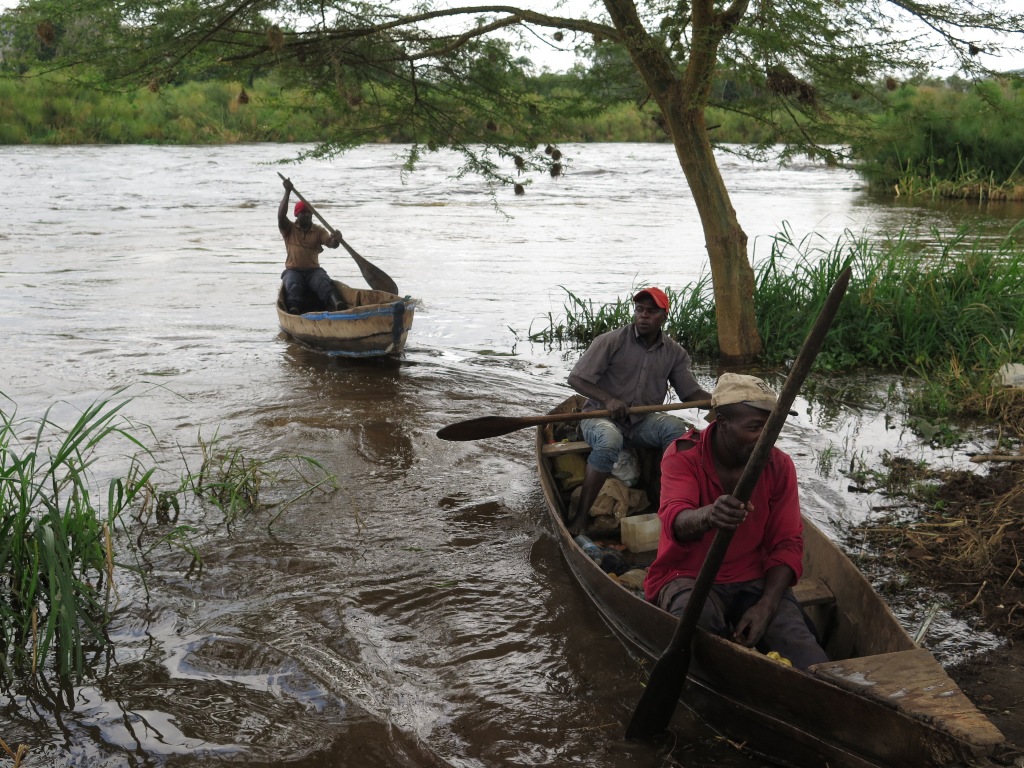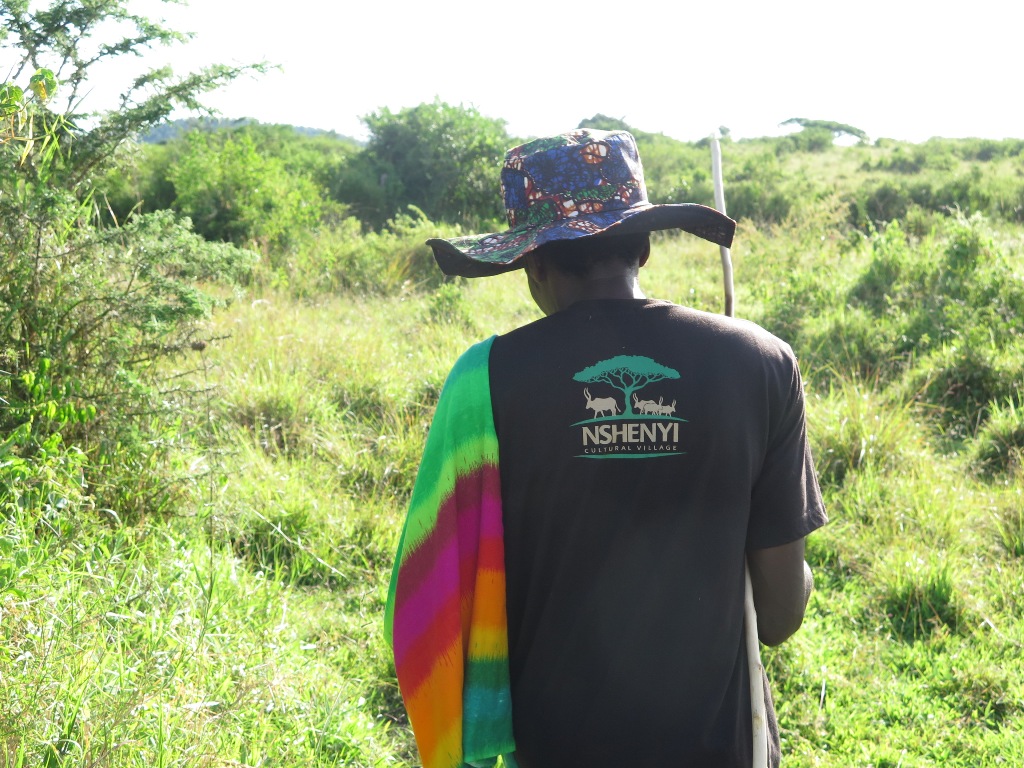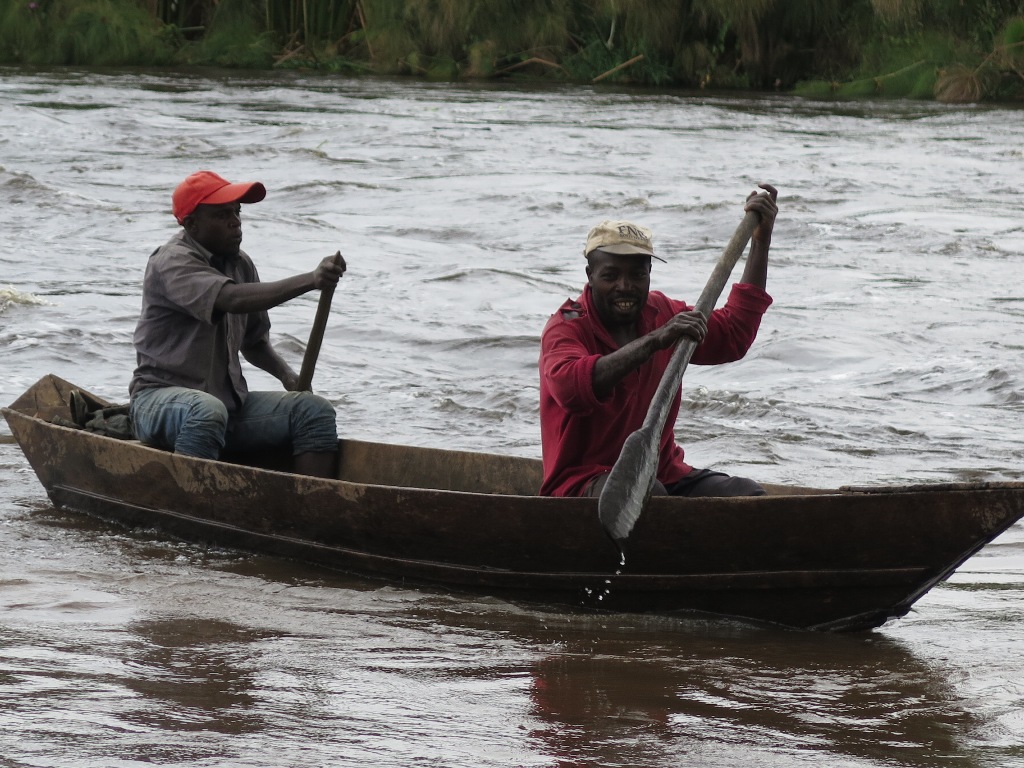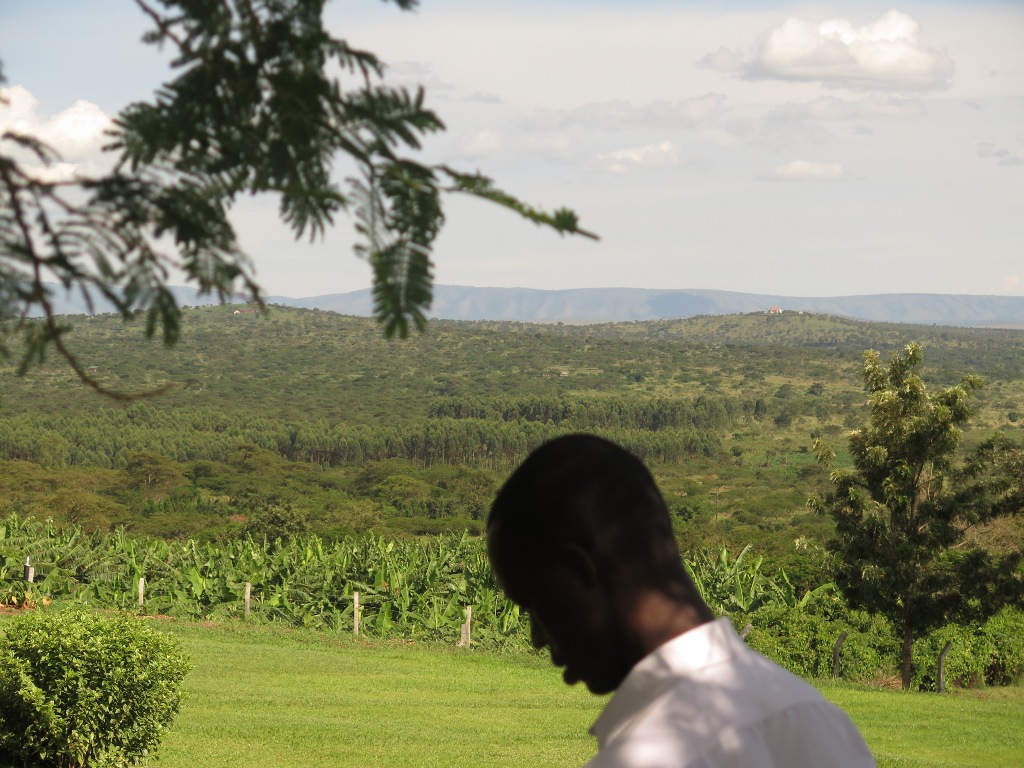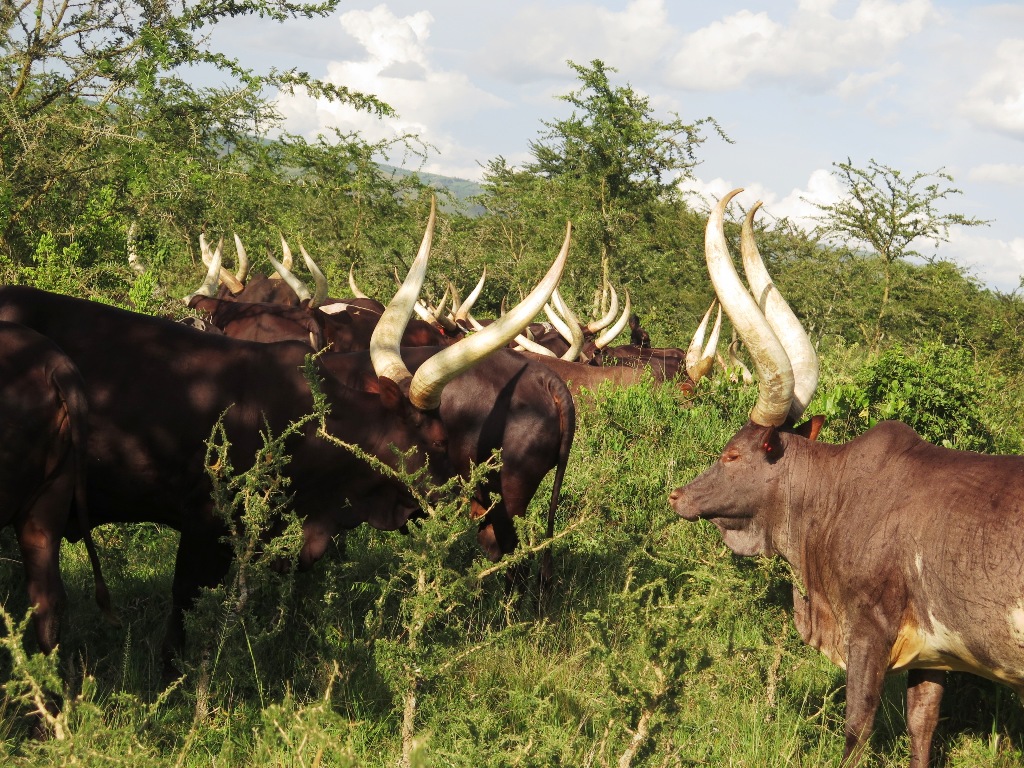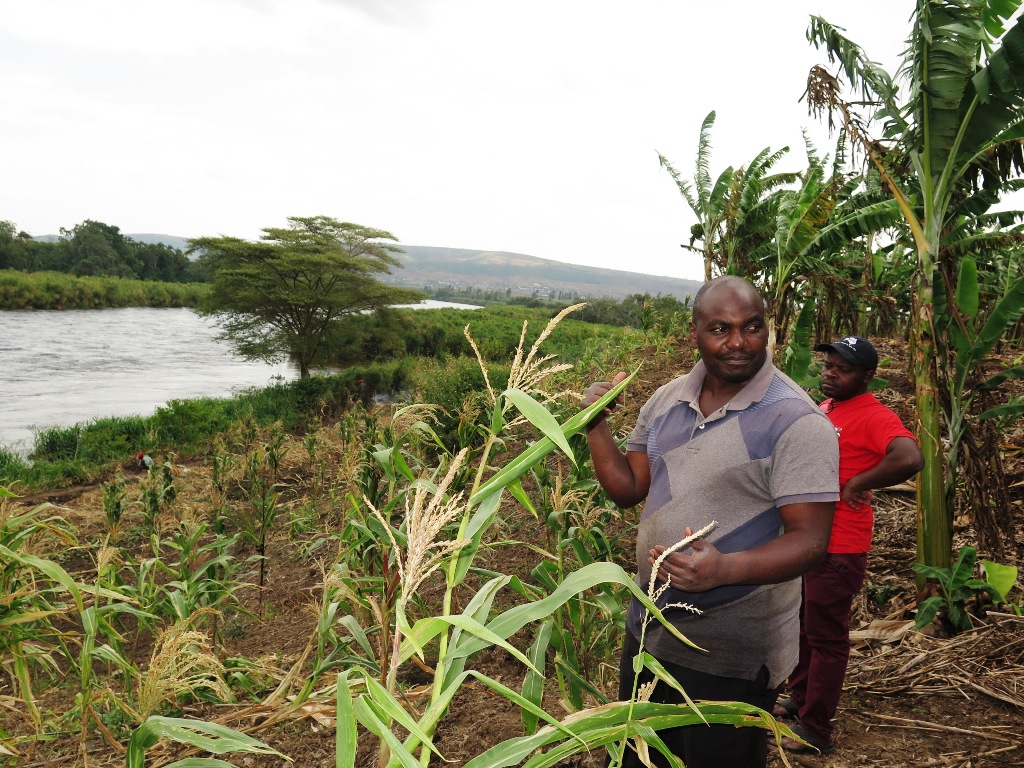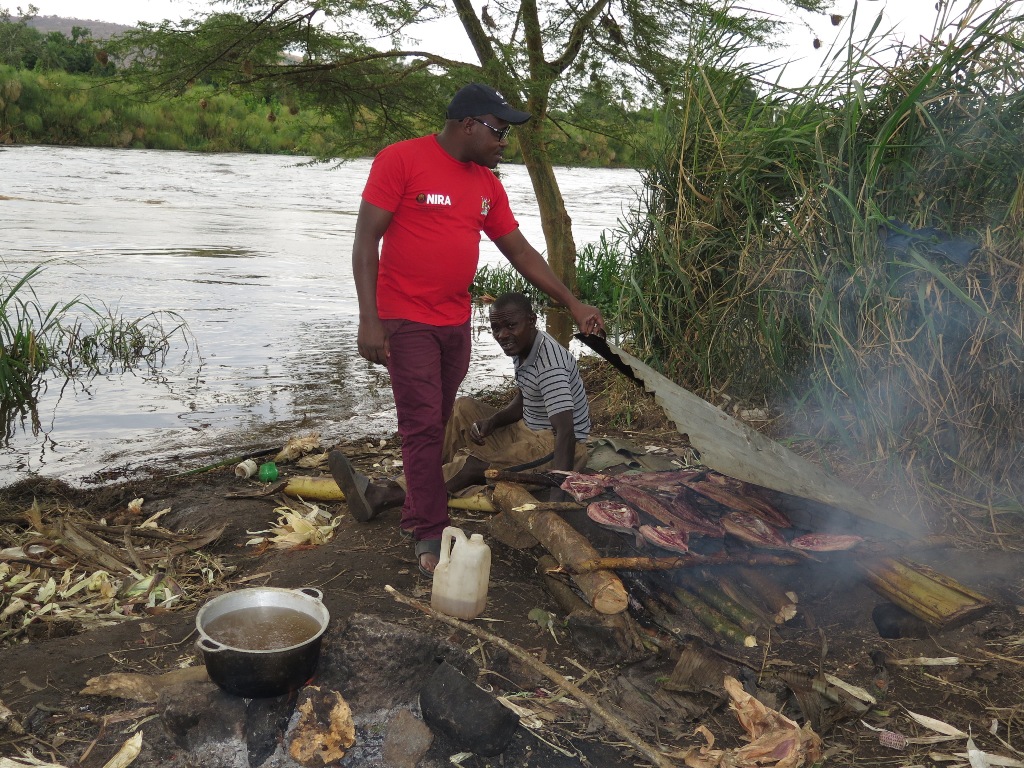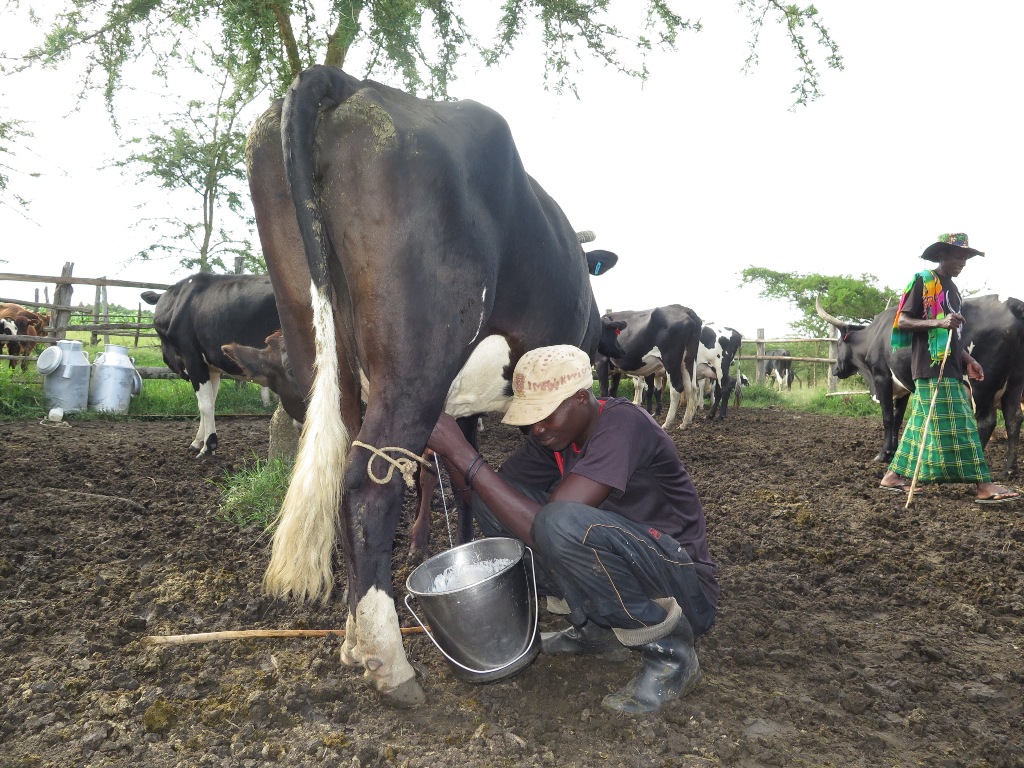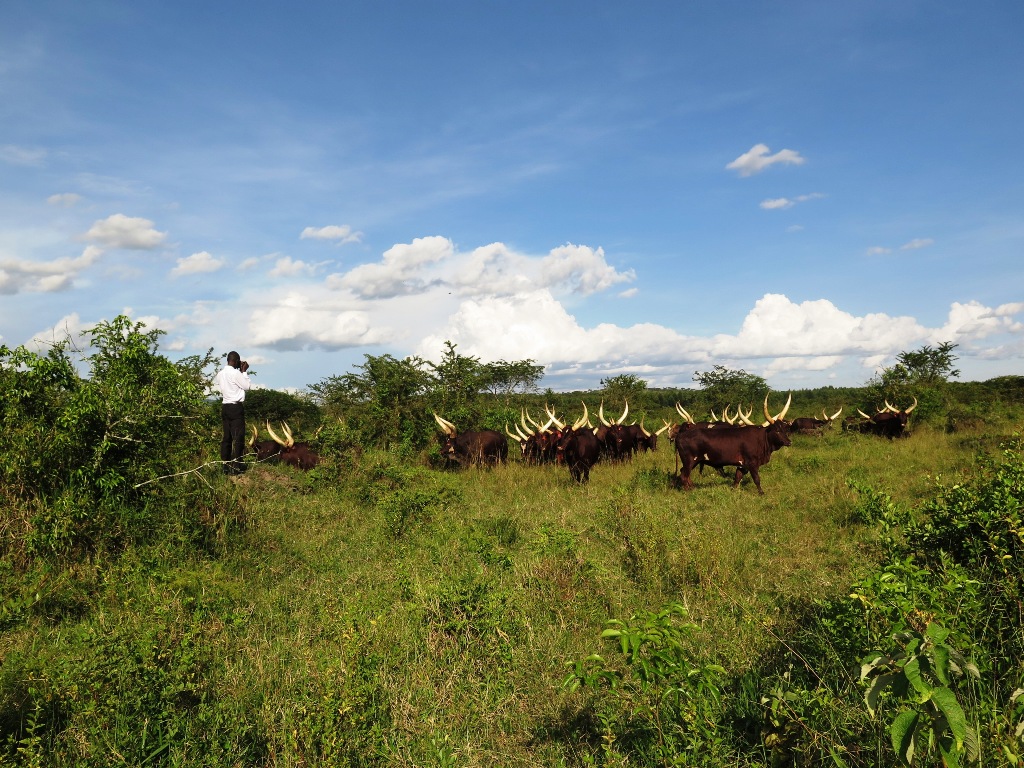By 1975, Nsheyi area, a stretch of over 80 Km2 was one of the blessed areas with game. The nature of the area, a gentle slopping with undulating gentle hills and low valleys, the valley with a wide water space, a river and tributaries, fauna and Flora and general beauty located between nations.
Antelopes, zebras, Giraffes, buffalos, Lions, Leopards, Elephants, Rhinoceros, crocodiles, Hippopotamus and all the African game animals lived here.
By decree, President Idi Amin Dada gave this part to pastoralists who wanted to settle in after complaints that game animals were invading their farms. Agriculturalists were also complaining same animals were invading their crops time and again.
The reserve, one of the research centres of the Uganda wildlife at the time was brought down by lobbyists in the Ankole district. Some were migrants from Nyabushozi, Rujumbura, Igara and later cultivators from Kigezi. They all were craving for farm land.
Residents remember President Amin firing six bullets in the air after a successful hunting in September 1975, declaring the game reserve a hunting area and, to transition into a farm land. Ankole District administration at the time came in dividing it into people’s possessions offering free hold land titles to residents who later hunted out all the animals.
The game reserve has since turned into a grazing land with cattle and fenced off land.
On one side Ms Mary Mugyenyi, the East Africa MP has developed a hotel facility, Nshenyi cultural village, the only tourism symbol that welcomes visitors to the defunct game reserve.
The facility mainly deals in Agri-tourism and Cultural tourism with people who normally come to stay tourists who want to feel the touch of the Ankole culture. Some visit as Honey moon couples after traditional wedding for passing through the tradition of marriage, others to observe the construction, some come to learn milking the Ankole Long horned cattle, others to observe the traditional farming methods while others come to relax in a green environment safe from city noise.
Mary’s Father in Law the late Rev Ephraim Baitwa was one of the great benefactors in the Game reserve give away. He took over 10Km2 of the land. He was one of the most influential people at the time who convinced President Amin to degazette the land.
“There is a lot we can do to the tourism industry, it’s not about going to the parks all the time. There is much that Uganda can offer. Our children no longer know their culture, some animals are becoming extinct and we must preserve some breeds. Here we have established a learning centre, for culture and Agriculture, for tourism maybe we can change the face of the industry.” Ms Mugyenyi notes.
Indeed, herds of Ankole long horned cattle can be seen in the acacia woods overlooked at the cultural village centre. It takes time to track the cattle that one sees from a distance. Beautiful and healthy, but wild cows and goats graze and browse in the woods unattended.
In the middle of the woods, a well maintained exotic animal farm stands. A man milks into a bucket as several other can are filled with milk. A bull mounts a cow and then the other bull tries the same but it’s fought off.
A distance away, hundreds of white long horned mainly brown colored cows and bulls graze. A large bull of over 400Kgs gazes in front of the big herd, the rest follow meekly.
They are like the big buffalos flowing in a game park running for water. The only difference is the faint that comes on seeing the two different animals, and the horns. This is the environment across the hills.
The valley is a rather wonderful and intriguing one. A large mass of water of a size of a lake flows through. It’s River Kagyera. One of the great features that made Nshenyi Game reserve a place to reckon with. The biggest feature is not however the river only, but the meeting place of the three East African countries, Uganda, Rwanda and Tanzania. The place is called Enteraniro by locals.
At Enteraniro
It’s a calm, afternoon at “the Lake” as it’s known by locals, a cool wind whirls over papyrus reed, makes a sound of a hissing snake, a sound of moving water is heard from a distance, a frog jumps out of flooded water and rushes back before the approaching humans.
Near the place of the frog, a man hidden within papyrus silently rows his hook-trap into the water, he keeps holding on as if waiting for something. He removes it with a high speed but, he catches nothing. He puts on the hook another earth worm, lows in again this a lung fish weighing up to 2Kgs is on the hook. He smiles and catches the fish by throat, strangles it and puts in a basin.
It’s a line of men from the Mirama stream down to the River Kagyera to where the waters can be reached doing the same.
At the apex of the Mirama stream mouth and where the stream directly enters a mass of water that is River Kagyera, a group of men seat down. There is a fire place covered by an iron sheet. Below the iron sheet fish is being smoked with little fire.
Three men from downstream Lake Kagyera struggles to keep a wooden boat on the fast moving water, they first pass the centre as if they are proceeding to Kigali, they take on the water with a heavy force, rowing to cross, the water is too strong and it takes the men with force and almost washing them off, they keep rowing on and finally, they cross the river and reach the landing site.
It’s a cerebration for those waiting as well as me who was scared I would see for the first time men failing to balance the boat and get washed off.
Near the men, two men struggle to pump water into a banana plantation, the little water engine pump breaks and works again. A middle aged man hold on to the pipe watering the leaves and roots of bananas. The water pipes snake into the plantation and splashes water through and through. This is the side of Uganda.
Uganda and Tanzania are strictly separated by the River, Kagyera and the land in Tanzania is Ibanda game reserve. There are animals and other Flora and fauna. The protected area is also used by fishermen who want bigger fish. At times the fishermen who are from the three countries but operate together along the river porch into the game reserve for fish, trees and wild animals.
The Rwanda side is a government land both from the big river and on the side of Mirama stream. A big irrigation scheme has been set up to supply water to farms on the borderline. The water point near Enteraniro is a source of all the water. A huge pipe surfs its water from down the stream and puts it into big tanks near the river that supply to remote controlled sprinklers that when ordered to start they sprinkle and wet the entire area.
The Uganda side, residents are trying to make a life from the river fishing and farming using their own means, on the Rwanda side the government is supplying water to residents for Agriculture and on the Tanzania side, the government is protecting the river from the residents. One thing is, all this used to be one Game reserve, separated by names; Nshenyi, Ibanda, Kagitumba/ Akagyera game reserves in Uganda, Tanzania and Rwanda respectively. By far this is one of the most beautiful borders in the world.
It is probably the most significant physical feature uniting East Africa, and making it what it is; East African Community. Without the River (Kagyera), Rwanda, Burundi South Sudan would indeed have no connection to other East African states given the fact that it also carries the waters that form river Nile that passes South Sudan.
It’s the biggest River basin that cuts through Western Uganda and people in Uganda would remember the Rwandan 1990s RPF war and the consequent April 1994 Genocide, its impact on fishing in the country, because of River Kagyera. Many also remember River Kagyera for the fall of President Iddi Amin Dada, read Invasion of the Kagyera salient 1978.
“There is nothing that happens in Rwanda that we will not be able to know, this river brings us all the news that happens. During the 1994 genocide, we would see bodies float, today when it rains we know the seasons have changed and if it’s dry we see the waters.” Mr Patrick Tumusiime, a farmer who owns a banana plantation near Enteraniro says.
One thing that is notable is that River Kagyera waters lower during rainy season in Uganda and gains more water when it’s in dry season. This means the seasons in Rwanda, Burundi and DR Congo are always the opposite of what happens in Uganda. This also happens to River Muhazi that is in the upstream of Kagyera River in Tanzania.
Mr Tumusiime also says that once in every 6 years, there is a long dry-spell that hits the basin and leaves almost everything dry including the banana plantation. This is normally attributed to seasons change.
Mr Samuel Mwebaze a fisherman who has lived and fished at River Kagyera- Enteraniro for over 20 years says he grew up when the place was in a game reserve that was later given away by President Idi Amin.
“When we grew up it was a game park with many animals including antelopes that used to eat our crops, it was later given to us by the president. So we are here because the president gave us this land no one can take us away.” Mr Mwebaze notes.
He says the days when it was a park were much better than even today because him and his father would go fishing and hunting at the same time.
Mr Joseph Kakunta a former sub county chief says the river meeting point should be recognized as one of the tourist sites in the country along with the defunct Nsheyi game reserve.
“We want the river to be recognized as the basic for Uganda, its experience on Uganda and the great lakes region is very big. We want to be proud that we are part of it. While people have land for grazing, I think it was a mistake degazetting the reserve. Nshenyi was the pride of Ankole, it was the only park with Rhinos.” Mr. Kakunta says.
There are still animals including Hippos, crocodiles, buffalos that at times escape from Tanzania and you find them at Enteraniro according to the fishermen.
Mr. Byomuhumuza George, a tour guide with Advantage Safaris Africa, a tour organization running tourism in Eastern Africa says many tourists are interested in seeing the site where river Kagyera enters Uganda, but many guides are ignorant.
“I have never gone there myself, but I have received a number of tourists wanting to reach this area, I may not be clear about the significance, but I will try and get much information. I have had 7 of my clients asking to take them there. I wish it is gazette as a tourism area and included on the East African tourism map. This would be a great achievement.” He says.
Enteraniro is at least 3 kilometres from Miraama hills border. The Mirama hills border used to be the headquarters of the protested area and an entry gate into the reserve for mainly researchers and tourists.
The Enteraniro can be accessed by passing through the heart of Sofia trading centre through a small bumpy road that leads to the place passing Kagyezi (loosely translated for lake) primary school through different farms. There is a big banana plantation fenced off from the animal farm that one meets before going down the river. One may easily mistake the Mirama stream for river Kagyera, but the water you first meet mainly covered with hyacinth does not move. This is a result of the competitive movement in the mouth of the river where it meets heavy waters of River Kagyera.
Following the hyacinth, there is also papyrus reed covering the visibility of the river. Finally one approaches and gets the voice of the big waters. It’s a lake in view and a big forest on the other side. Water is running so fast and at times carrying some branches.
This has also been a place for escape when it gets to instability times and heavy guns have also sounded here. However some people remember crossing the river and tributaries for refugee in Tanzania and Rwanda, others know it as a source of goods smuggled from the neighborhood, and others know it as a source of water for selves and cattle, but the most significant of all is that this is the river that carries the early waters of the longest river in the world.
When it’s raining heavily, the river turns dark like soils, and clears when its sunny, when there is war, we see blood and when there is peace the river tells us the good news by becoming pure and natural.
“Every time we see the river loaded with grass, we use a phrase the river is migrating with its belongings, we know there is something happening upstream and it must not be good, when it is clear, we always know it is peaceful, under normal cases we know that our people have been arrested in Rwanda when we see branches of trees on river top.” Mr. Ephraim Ntaratambi says.
Mr Bashir Hangi, the Uganda wildlife Authority spokesperson says he knows nothing about the degazetted game reserve.
“I don’t know that area among the wildlife reserves under UWA. I don’t know of another area that has been degazetted. Do you want people to know it was degazetted?” Mr Hangi notes in a watsapp message.
The Ntungamo district tourism officer Mr Robert Keizire notes that the Nshenyi area needs to be put on the tourism map by the Uganda tourism board not only for being a former conservation area but also for what it has turned into and its features and neigbourhood.
“This is a place where we have river Kagyera separating three countries I don’t know of any big river separating three countries at a common border, the political history of Kagyera, Tanzania and Uganda, with two countries conserving on each side and that this is the only former conservation area in this part of the country, near the border with Rwanda at Mirama and Tanzania at Marongo- Kikagati just less than 4Km apart.” He says.
He also says with the hotel industry developing in the three main town councils of Kitwe, Miraama hills and Kikagati tourism developers and conservationists need to take kin interest.
Kafunjo- Mirama Hills town council Chairperson Mr James Turyahikayo Habineza says his town is looking at becoming the biggest tourism city in the Ankole region.
“Starting with the Nshenyi game reserve, the border is also remembered for the 1990 invasion of Rwanda by exiles, we have Enteraniro, we have a great population and potential for great development, we are inviting everyone to come here for investment.” Mr Habineza says.

